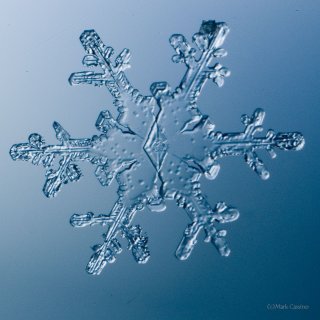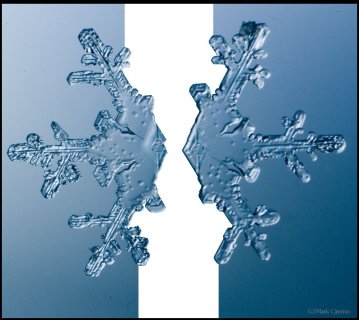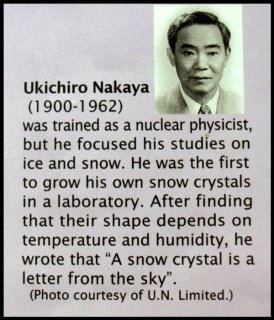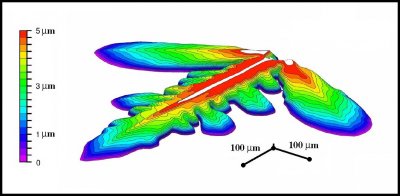| « Snow Science: an annotated list to topics | How some snow crystals hide their droplet origin » |
Two-level nature of branched crystals
The common branched crystal looks like a paper cut-out, but actually has a complex 3-D nature. One aspect of this nature, which I have alluded to in prior posts, is the two-level structure: What appears to be happening on one plane, is actually occurring on two. For example, consider the following dendrite of Mark's:
The six branches of this crystal are not on the same level: the three on the right are on the top level, whereas the three on the left are on the bottom. If I could break the connection between the levels and pull them apart, they would look similar to this:
Actually, the connection can be broken. The fellow who first did this was Ukichiro Nakaya back in the 1930s.
Instead of using photoshop (as I did above), Nakaya (or rather Nakaya's assistant) used a razor blade in a very cold room. His assistant must have been both highly skilled as well as very patient, because each level is separated by less than half the width of a typical human scalp hair.
The levels themselves are even thinner. For a fern-like dendrite, which may be 2 mm across, the thickness of one level may be 300 to 500 times thinner. A recent study ** by Wataru Shimada and Kazuki Ohtake of Toyama Univ. in Japan used a laser-imaging device to map out the contours on such a branch. The result shows an intricate 3-D structure:
(Thanks to Prof. Shimada for sending me this image. I have slightly simplified it.) The image shows the central part of the branch as a ridge, with numerous valleys running down both sides. The thickness of the region in red is only 5 micro-meters (5 millionth of a meter or about 0.2 thousandths of an inch).
None of this is the flat facet that we imagine a snow crystal to be. There is one flat facet however -- it is on the bottom side.
-- JN
**The study is here, though not freely accessible: http://pubs.acs.org/doi/abs/10.1021/acs.cgd.6b01263



